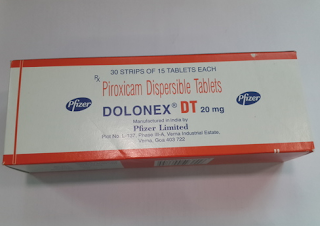Ankylosing Spondylitis
Ankylosing Spondylitis
Ankylosing Spondylitis
Ankylosing Spondylitis Video
Ankylosing spondylitis (AS) is a type of arthritis that primarily affects the spine. The disease is characterized by inflammation in the joints along the spine, causing stiffness, pain, and often the fusing together of several bones in the spine. The knee and shoulder joints may also be affected.
Choose from the topics below for peer reviewed articles on Ankylosing Spondylitis
Ankylosing spondylitis (ankle-low-zing spond-ill-eye-tis) is a type of arthritis, which means it causes inflammation that affects joints. It typically affects the joints of the spine, leading to back pain and stiffness, but it can affect other joints, too, such as the knee and shoulder.
Symptoms of ankylosing spondylitis vary from person to person. One person may experience occasional flares of neck pain and fatigue while another experiences severe chronic back pain, painful eye symptoms, and even spine deformities.
The name ankylosing spondylitis is derived from the symptoms doctors initially observed in patients, who often had a hunched appearance:
Ankylos, derived from the Greek root ankylosis, refers to a joint that is stiff, fused, bent, and/or crooked
Spondylo refers to vertebra
itis refers to inflammation
Because of today’s treatments, most ankylosing spondylitis patients do not progress to the point where posture is visibly affected. However, partial fusion of one or just a few segments of the spine can lead to back pain and restricted movement. Early diagnosis and treatment can reduce pain and limit the loss of joints’ range of motion.
When to Seek Medical Attention
People are advised to see their doctor if they have:
- Experienced pain in the low back or buttocks (particularly alternating buttock pain) for 3 months or longer, especially if they are males under the age of 45. Ankylosing spondylitis pain is worse during rest and when getting out of bed. The pain typically gets better with activity and exercise.
- Eye pain and redness, significant sensitivity to light, or blurred vision—in addition to or instead of back pain.
People experiencing eye symptoms are encouraged to make an appointment with their primary care doctor or an ophthalmologist as soon as possible, as permanent eye damage can occur without treatment.
What Happens in People Who Have Ankylosing Spondylitis?
In a normal spine, the vertebrae are spaced out, separated by intervertebral discs and connected by ligaments. Ankylosing spondylitis causes changes in the spine, resulting in two or more vertebrae to grow closer together and possibly even fuse. How does this happen?
Inflammation occurs at the spinal joints, where vertebra, intervertebral discs, ligaments, and tendons are located. (Ligaments attach bones to other bones. Tendons attach muscles to bones.)
The inflammation causes pain, stiffness, and restricted range of motion in the spine.
As the inflammation subsides, the body’s natural healing process causes scar tissue to form where the inflammation took place. When normal tissue is replaced with scar tissue it is called fibrosis.
Over time and perhaps repeated periods of inflammation, the scar tissue calcifies, causing it to turn to bone tissue.
The new bone tissue is rigid, and the affected joints become less flexible.
As more bone tissue is created, the affected bones can grow together, causing the joints of the spine and/or the sacroiliac joint to become fused. When fusion occurs joint flexibility is lost.
Losing flexibility in a joint can be frustrating and painful. Preserving flexibility through exercise and treatment can help control pain.
Enthesopathy
People who are diagnosed with ankylosing spondylitis may hear their doctors talk about enthesopathy [en-THEE-sawp-a-thee]. An enthesis is an area where a ligament or tendon attaches to bone. Enthesopathy is any disease or disorder of an enthesis.
See What Is Enthesopathy and Enthesitis?
Enthesopathy results from the disease process (described in steps 1-6 above), and it is a hallmark of ankylosing spondylitis. It most commonly affects:
The facet joints that connect the spine’s vertebrae
The sacroiliac joint between the base of the spine and the pelvis
Peripheral joints, particularly the hips, shoulders, plantar fascia of the foot, and the Achilles tendon. (The bones of these joints do not fuse, like the facet and sacroiliac joints.)
See 5 Unusual Ankylosing Spondylitis Symptoms
Enthesopathy can also affect joints that have little movement—sometimes called fixed joints—such as the joints between the breastbone and ribs.
For some people, ankylosing spondylitis symptoms worsen over time. A small number of people report that symptoms lessen or plateau as they reach middle age.




Comments
Post a Comment